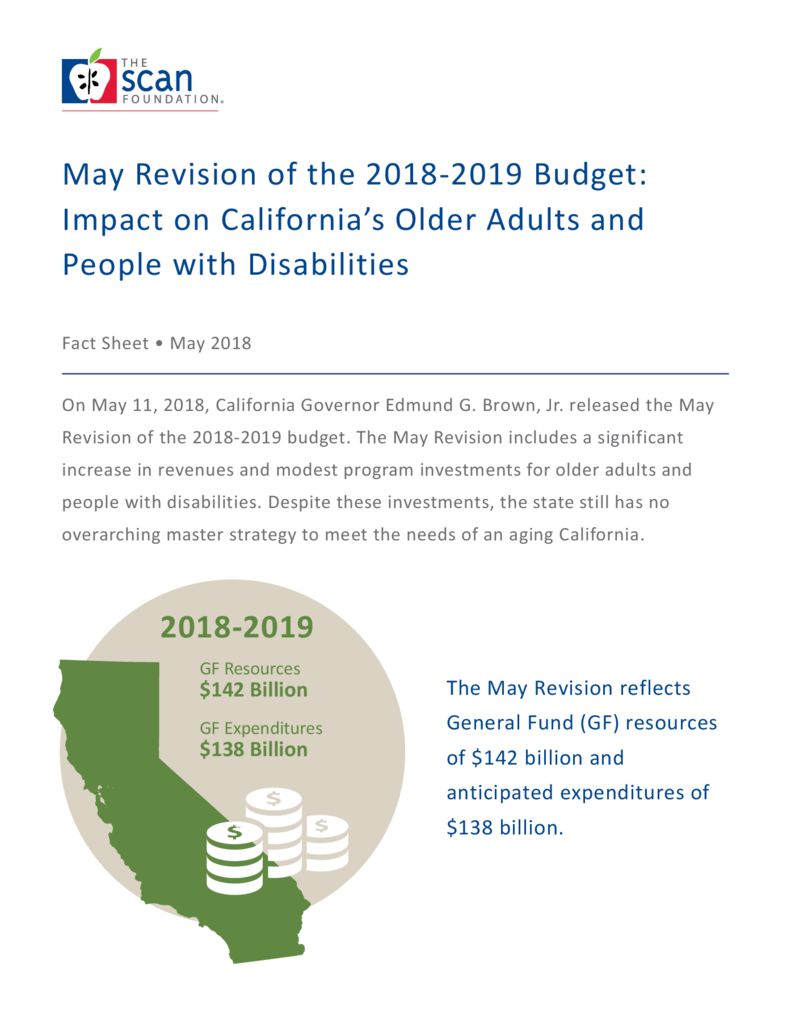May Revision of the 2018-2019 Budget: Impact on California’s Older Adults and People with Disabilities
summary
On May 11, 2018, California Governor Edmund G. Brown, Jr. released the May Revision of the 2018-2019 budget. While it includes a significant increase in revenues and modest program investments for older adults and people with disabilities, the state still has no overarching master strategy to meet the needs of an aging California. Read more in this fact sheet.
Date Updated: 05/31/2018Overview
On May 11, 2018, Governor Edmund G. Brown, Jr. released an updated budget forecast for the 2018-2019 budget, referred to as the “May Revision,” which accounts for changes in revenues and proposed changes to expenditures from the January budget. The May Revision reflects a revenue increase of $3.7 billion above the January projections, and an $8 billion General Fund (GF) surplus from fiscal year 2017-2018 for a total of $142 billion in GF resources.1 The May Revision includes $138 billion in GF expenditures, leaving a reserve of $3.2 billion GF for the fiscal year beginning on July 1, 2018, and ending June 30, 2019.1,2 The Budget Stabilization Account, referred to as the Rainy Day Fund, is projected to increase to $13.8 billion.1 As part of the May Revision, the governor proposes an additional $4 billion in new, one-time GF spending in fiscal year 2018-2019 for infrastructure, homelessness, and mental health investments…
Download the publication for all visuals and complete references.
Continue Reading
This policy brief provides an introduction to The SCAN Foundation’s CLASS Technical Assistance Brief Series, which explores many of the critical issues to be considered for successfully implementing CLASS.
This policy brief describes the broad needs of individuals with disability and the wide range of supportive and environmental solutions that can allow for the most independent living possible. It suggests how findings on social and environmental supports for individuals with disability can inform implementation of CLASS.
This policy brief provides background on the historical development of benefit eligibility triggers in the private long-term care insurance market. Understanding how these triggers came into being can provide important information to those charged with implementing the CLASS Plan.


